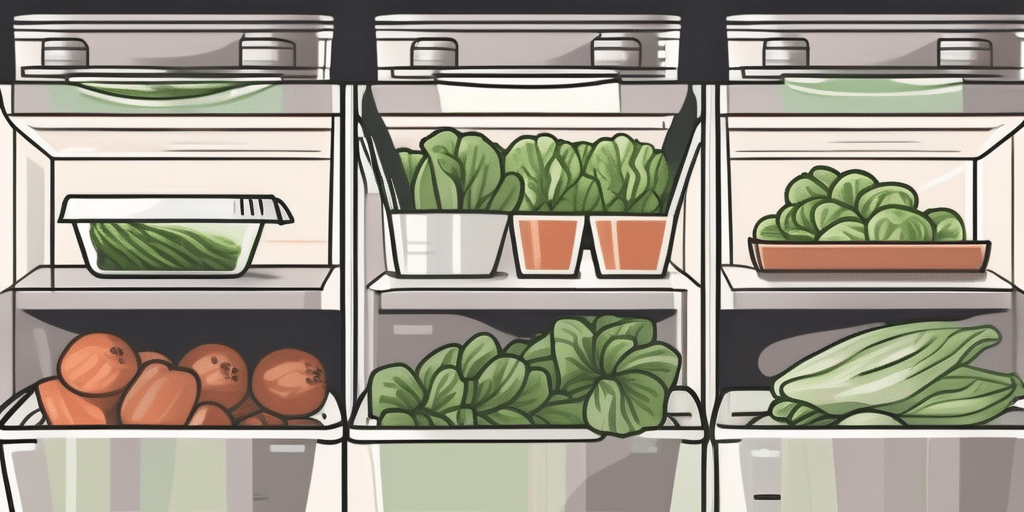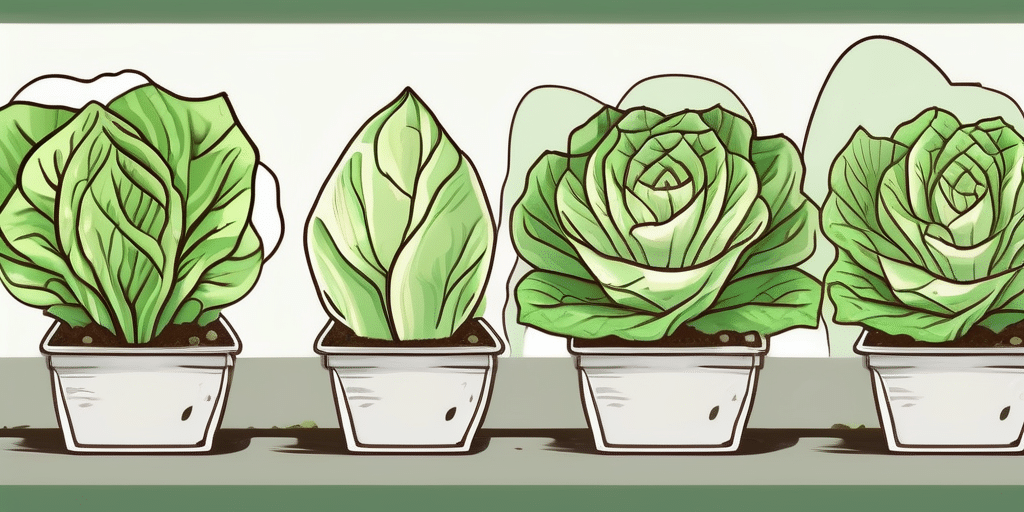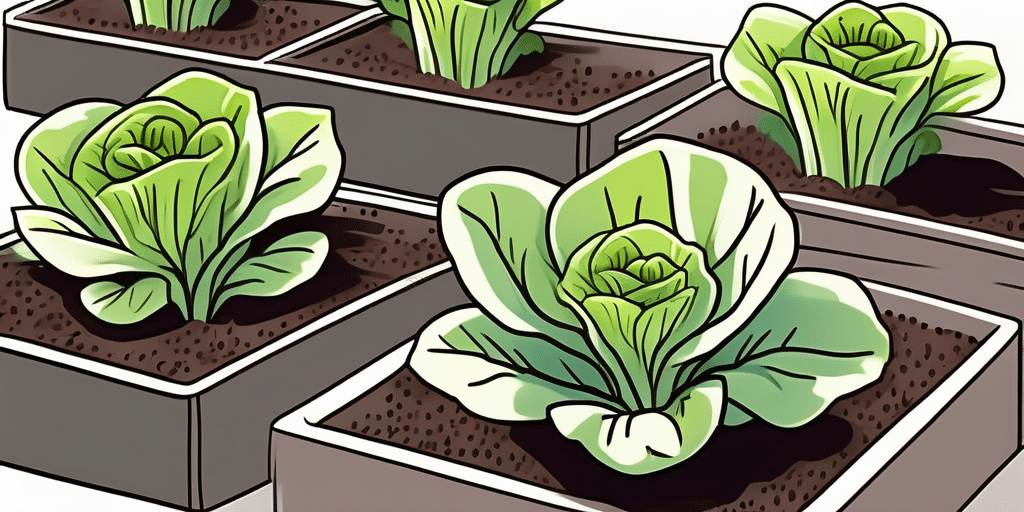Lettuce is a versatile and popular leafy green vegetable that adds crunch and flavor to salads, sandwiches, and wraps. With so many varieties available, it can be challenging to choose which one to use in your dishes. In this article, we will compare two popular lettuce varieties: Crisp Mint Lettuce and Oak Leaf Lettuce. Let’s dive in and explore the characteristics, pros, and cons of each.Crisp Mint Lettuce is not only a delicious addition to salads but also a nutritious one. Packed with vitamins A and K, this vibrant green leafy vegetable is a great source of antioxidants that help boost the immune system and promote healthy skin. Its crunchy texture adds a delightful contrast to salads, sandwiches, and wraps, making it a versatile ingredient in various dishes.In addition to its culinary uses, Crisp Mint Lettuce has a fascinating history. Believed to have originated in the Mediterranean region, lettuce has been cultivated for over 2,500 years. The butterhead variety, to which Crisp Mint Lettuce belongs, is known for its loose, tender leaves that form a rosette shape. This lettuce variety has gained popularity not only for its flavor but also for its ease of cultivation, making it a favorite among home gardeners and commercial farmers alike.
Pros & Cons of Crisp Mint Lettuce
Like any lettuce variety, Crisp Mint Lettuce has its own set of advantages and disadvantages. Let’s take a closer look:
- Pros:
- Delicious, refreshing flavor.
- Crunchy texture that adds great texture to salads.
- Rich in vitamins A and K, as well as folate.
- Low in calories, making it a great option for those looking to maintain a healthy diet.
- Cons:
- Can be more expensive compared to other lettuce varieties.
- May wilt faster than other lettuces, so it’s best to consume it soon after purchasing.
- Requires careful handling due to its delicate leaves, which can bruise easily.
Crisp Mint Lettuce, with its vibrant green color and unique minty undertones, not only provides a burst of flavor to your dishes but also offers a visual appeal that can elevate the presentation of any meal. Its versatility extends beyond salads; you can use the large, crisp leaves as a healthy alternative to tortillas in wraps or as a fresh topping for sandwiches.
Oak Leaf Lettuce, also known as “Lactuca sativa,” is a popular choice among home gardeners and professional chefs alike due to its versatility and aesthetic appeal. This lettuce variety is a cool-season crop that thrives in moderate temperatures, making it an ideal choice for spring and fall gardens. Oak Leaf Lettuce is a fast-growing plant, typically reaching maturity within 45 to 55 days after planting.One of the key benefits of Oak Leaf Lettuce is its high nutritional value. It is rich in vitamins A and K, as well as folate and iron. This makes it a great addition to salads, sandwiches, and wraps for an added boost of essential nutrients. Additionally, Oak Leaf Lettuce is low in calories and carbohydrates, making it a popular choice for those looking to maintain a healthy diet.When harvesting Oak Leaf Lettuce, it is important to cut the leaves near the base of the plant to encourage new growth. This continuous harvesting method allows for a longer growing season and ensures a fresh supply of tender leaves throughout the growing period. Oak Leaf Lettuce can be grown in containers or directly in the ground, making it a versatile option for gardeners with limited space. Whether enjoyed on its own or mixed with other salad greens, Oak Leaf Lettuce is a delicious and nutritious addition to any meal.
Pros & Cons of Oak Leaf Lettuce
Let’s explore the advantages and disadvantages of using Oak Leaf Lettuce:
Oak Leaf Lettuce is not only a flavorful addition to your dishes but also a nutritional powerhouse. Its mild and nutty flavor complements a wide range of ingredients, making it a versatile choice for salads, sandwiches, and wraps. Rich in vitamins A and C, Oak Leaf Lettuce also provides a good source of folate, essential for overall health and well-being.
- Pros:
- Mild and nutty flavor that complements a wide range of ingredients.
- Packed with vitamins A and C, and a good source of folate.
- Leaves are often more resistant to wilting, making it a great choice for meal prepping.
- Cons:
- Leaf lettuce varieties, including Oak Leaf Lettuce, tend to have shorter shelf lives compared to head lettuces.
- Leaves may have a slightly more fibrous texture compared to butterhead lettuces.
When selecting Oak Leaf Lettuce, look for vibrant green leaves that are crisp and free of wilting. To prolong its freshness, store the lettuce in a perforated plastic bag in the refrigerator crisper drawer. Consider incorporating Oak Leaf Lettuce into your diet to enjoy its unique flavor profile and numerous health benefits.
Is Crisp Mint Lettuce or Oak Leaf Lettuce Right for You?
Choosing between Crisp Mint Lettuce and Oak Leaf Lettuce depends on your personal preference and the recipe you are preparing. Here are a few things to consider:
- Flavor: If you enjoy a refreshing, minty taste, Crisp Mint Lettuce is a great option. However, if you prefer a mild and nutty flavor, Oak Leaf Lettuce might be the better choice.
- Texture: If you prefer lettuce with a buttery and crisp texture, Crisp Mint Lettuce is the way to go. On the other hand, if you like lettuce with a delicate and tender texture, Oak Leaf Lettuce is worth a try.
- Usage: Crisp Mint Lettuce’s refreshing flavor pairs well with fruits, citrus dressings, and seafood. Oak Leaf Lettuce’s mild flavor makes it versatile and suitable for a wide range of dishes, including salads, sandwiches, and wraps.
- Availability: Depending on your location and the time of year, one lettuce variety may be more readily available than the other. Keep an eye out for local produce and choose accordingly.
Frequently Asked Questions
Q: Are Crisp Mint Lettuce and Oak Leaf Lettuce nutritious?
A: Yes, both Crisp Mint Lettuce and Oak Leaf Lettuce are nutritious choices. They are low in calories and packed with vitamins and minerals, including vitamin A, vitamin K, and folate.
Q: How should I store Crisp Mint Lettuce and Oak Leaf Lettuce?
A: To keep your lettuce fresh, store it in the refrigerator in a plastic bag or airtight container. Wash the leaves only when you are ready to use them to prevent premature wilting.
Q: Can I grow Crisp Mint Lettuce and Oak Leaf Lettuce in my garden?
A: Yes, both lettuce varieties can be successfully grown in home gardens. They thrive in cool weather with well-draining soil and require regular watering.
Q: Can I mix Crisp Mint Lettuce and Oak Leaf Lettuce together in a salad?
A: Absolutely! Mixing different lettuce varieties adds visual interest and varied flavors and textures to your salads.
Q: Where can I buy Crisp Mint Lettuce and Oak Leaf Lettuce?
A: Crisp Mint Lettuce and Oak Leaf Lettuce can be found in well-stocked grocery stores, farmers’ markets, and specialty produce shops. Check with local farmers and community-supported agriculture (CSA) programs for the freshest options.
Now that you have a better understanding of the characteristics and differences between Crisp Mint Lettuce and Oak Leaf Lettuce, you can make an informed choice based on your personal taste preferences and recipe requirements. Whether you opt for the refreshing flavor of Crisp Mint Lettuce or the mild nuttiness of Oak Leaf Lettuce, both will undoubtedly add freshness and crunch to your culinary creations.
Join Our Green-Thumbed Community!
Ready to transform your salads with homegrown Crisp Mint Lettuce and Oak Leaf Lettuce? Subscribe for free to How to Grow Everything and learn how to cultivate the garden of your dreams! Receive tailored gardening advice that aligns with your local grow zone, experience level, and interests. Enjoy the best gardening tips, special offers, and insightful articles—all delivered directly to your inbox. Join our family of gardening enthusiasts and start growing everything with confidence today!






